Storage Matters: Why Xbox and Playstation SSDs Usher In A New Era of Gaming
by Billy Tallis on June 12, 2020 9:30 AM EST- Posted in
- SSDs
- Storage
- Microsoft
- Sony
- Consoles
- NVMe
- Xbox Series X
- PlayStation 5
What To Expect From Next-gen Games
NVMe SSDs can easily be 50 times faster than hard drives for sequential reads and thousands of times faster for random reads. It stands to reason that game developers should be able to do things differently when they no longer need to target slow hard drives and can rely on fast storage. Workarounds for slow hard drive performance can be discarded, and new ideas and features that would never work on hard drives can be tried out. Microsoft and Sony are in pretty close agreement about what this will mean for the upcoming console generation, and they've touted most of the same benefits for end users.
Most of the game design changes enabled by abandoning hard drives will have little impact on the gaming experience from one second to the next; removing workarounds for slow storage won't do much to help frames per second, but it will remove some other pain points in the overall console experience. For starters, solid state drives can tolerate a high degree of fragmentation with no noticeable performance impact, so game files don't need to be defragmented after updates. Defragmentation is something most PC users no longer need to give even a passing thought, but it's still an occasionally necessary (albeit automatic) maintenance process on current consoles.
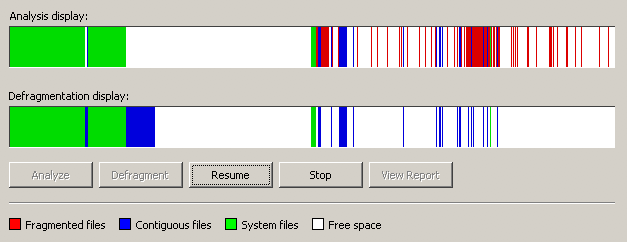
Not as obsolete as you might have thought. But soon.
Since game developers no longer need to care so much about maintaining spatial locality of data on disk, it will also no longer be necessary for data that's reused in several parts of a game to be duplicated on several parts of the disk. Commonly re-used sounds, textures and models will only need to be included once in a game's files. This will have at least a tiny effect on slowing the growth of game install sizes, but it probably won't actually reverse that trend except where a studio has been greatly abusing the copy and paste features in their level editors.
Warnings to not turn off the console while a game is saving first showed up when consoles moved away from cartridges with built-in solid state storage, and those warnings continue to be a hallmark of many console games and half-assed PC ports. The write speeds of SSDs are fast enough that saving a game takes much less time than reaching for a power switch, so ideally those warnings should be reduced, if not gone for good.
But NVMe SSDs have write speeds that go far beyond even that requirement, and that allows changes in how games are saved. Instead of summarizing the player's progress in a file that is mere megabytes, new consoles will have the freedom to dump gigabytes of data to disk. All of the RAM used by a game can be saved to a NVMe SSD in a matter of seconds, like the save state features common to console emulators. If the static assets (textures, sounds, etc.) that are unmodified are excluded from the save file, we're back down to near instant save operations. But now the save file and in-use game assets can be simply read back into RAM to resume the whole game state in no more than a second or two, bypassing all the usual start-up and load work done by games.
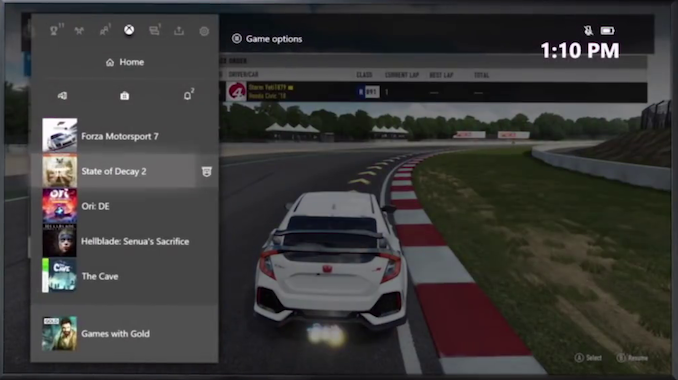
Xbox Series X Quick Resume menu
The deduplication of game assets is a benefit that will trivially carry over to PC ports, and the lack of defragmentation is something PC gamers with SSDs have already been enjoying for years—and neither of those changes requires a cutting edge SSD. The instant save and resume capabilities can work just fine (albeit not quite so "instant") on even a SATA SSD, but implementing this well requires a bit of help from the operating system, so it may be a while before this feature becomes commonplace on PC games. (Desktop operating systems have long supported hibernate and restore of the entire OS image, but doing it per-application is unusual.)
But those are all pretty much convenience features that do not make the core game experience itself any richer. The reduction or elimination of loading screens be a welcome improvement for many games—but many more games have already gone to great lengths to eliminate loading screens as much as possible. This most often takes the form of level design that obscures what would have been a loading screen. The player's movement and field of view are temporarily constrained, drastically reducing the assets that need to stay in RAM and allowing everything else to be swapped out, while retaining some illusion of player freedom. Narrow hallways and canyons, elevator and train rides, and airlocks—frequently one-way trips—are all standard game design elements to make it less obvious where a game world is divided.
Open-world games get by with fewer such design elements by making the world less detailed and restricting player movement speed so that no matter where the player chooses to move, the necessary assets can be streamed into RAM on the fly. With a fast SSD, game designers and players will both have more freedom. But some transition sequences will still be required for major scene changes. The consoles cannot reload the entire contents of RAM from one frame to the next; that will still take several seconds.
SSD As RAM?
Finally, we come to what may be the most significant consequence of making SSDs standard and required for games, but is also the most overstated benefit: Both Microsoft and Sony have made statements along the lines of saying that the SSD can be used almost like RAM. Whatever qualifiers and caveats those statement came with quickly get dropped by fans and even some press. So let's be clear here: the console SSDs are no substitute for RAM. The PS5's SSD can supply data at 5.5 GB/s. The RAM runs at 448 GB/s, *81 times faster*. The consoles have 16 GB of GDDR6 memory. If a game needs to use more than 16 GB to render a scene, framerates will drop down to Myst levels because the SSD is not fast enough. The SSDs are inadequate in both throughput and latency.
It's certainly possible for a level to use more than 16GB of assets, but not all on screen at once. The technical term here is working set: how much memory is really being actively used at once. What the SSD changes somewhat is the threshold for what can be considered active. With a fast SSD, the assets that need to be kept in DRAM aren't much more than what's currently on screen, and the game doesn't need to prefetch very far ahead. Textures for an object in the same room but currently off-screen may be safe to leave on disk until the camera starts moving in that direction, whereas a hard drive based system will probably need to keep assets for the entire room and adjacent rooms in RAM to avoid stuttering. This difference means an SSD-based console (especially with NVMe performance) can free up some VRAM and allow for some higher-resolution assets. It's not a huge change; it's not like the SSD increases effective VRAM size by tens of GBs, but it is very plausible that it allows games to use an extra few GB of RAM for on-screen content rather than prefetching off-screen assets. Mark Cerny has approximated it as saying the game now only needs to pre-fetch about a second ahead, rather than about 30 seconds ahead.
There's another layer to this benefit: partially resident textures has been possible on other platforms, but becomes more powerful now. What was originally developed for multi-acre ground textures can now be effectively used on much smaller objects. Sampler feedback allows the GPU to provide the application with more detailed and accurate information about which portions of a texture are actually being displayed. The game can use that information to only issue SSD read requests for those portions of the file. This can be done with a granularity of 128kB blocks of the (uncompressed) texture, which is small enough to allow for meaningful RAM savings by not loading texels that won't be used, while at the same time still issuing SSD reads that are large enough to be a good fit for SSD performance characteristics.
Microsoft has stated that these capabilities add up to the effect of a 2x or 3x multiplier of RAM capacity and SSD bandwidth. I'm not convinced. Sure, a lot of SSD bandwidth can be saved over short timescales by incrementally loading a scene. But I doubt these features will allow the Series X with its ~10GB of VRAM to handle the kind of detailed scenery you could draw on a PC GPU with 24GB of VRAM. They're welcome to prove me wrong, though.


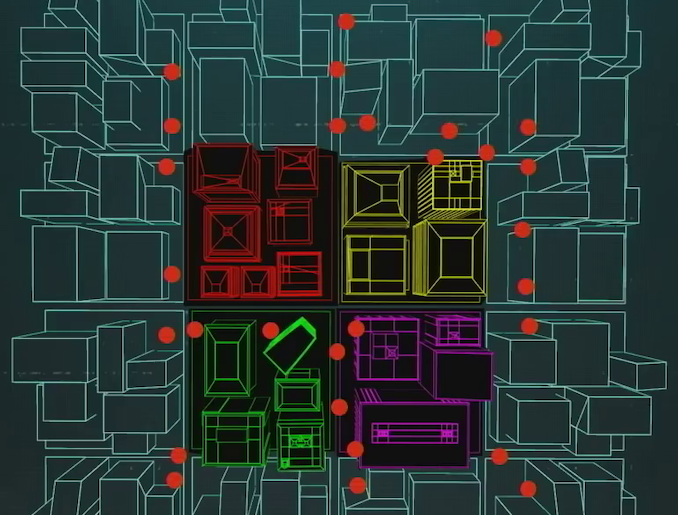
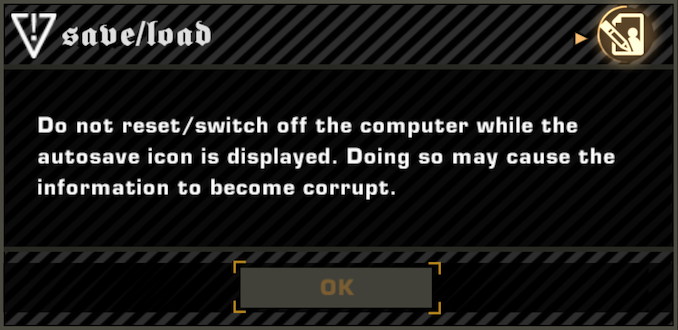
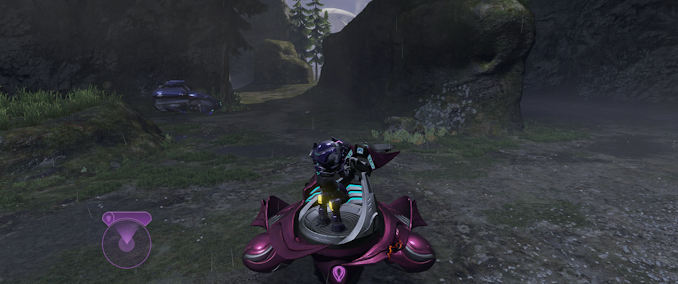










200 Comments
View All Comments
PeachNCream - Friday, June 12, 2020 - link
What makes a console a good piece of hardware is that I do not have to even care what is inside the box that runs the games since the games that I buy for said console will just work as intended. Every generation has extensive discussion about hardware and the usual comparing and penis measuring between brands. It all ends up being meaningless when you pick up a controller and play a game on it which is far and above the hassle of PC gaming in terms of equipment apathy. In short, IDGAF what drive is inside the thing. Insert disc (or download digital copy) and game on!shabby - Friday, June 12, 2020 - link
Games will work just as intended? Are you suggesting console games never suffer from fps dips below 30fps or have lower quality graphics to hit 30fps?close - Friday, June 12, 2020 - link
If you played on both console and PC then you know what that means. I do that and yes, on the console it's a lot more hassle-free. Every game is optimized for *that* configuration, perhaps with minor variations between the 2-3 cycle refreshes. No need to worry about "does it work better on the Radeon? Should I use the older driver? Adjust graphics settings to determine which one has the best graphics for *your* PC. Etc. It extracts the most out of that hardware.On my PC (with a far better config than any console) Assassin's Creed Odyssey freezes for a second (not a figure of speech) every once in a while even if it runs flawlessly otherwise. On the Xbox it works just fine. On the PC I had to adjust graphics because the highest level was just a tad too much but the next lower level left too much performance on the table, so I had to tweak a full screen (or 2) of settings about shadows, aliasing, and whatnot to get "the best for my setup". Maybe. I don't know, I can't be bothered to spend half a day experimenting. Now subjectively it looks better on the Xbox with a 4K screen than on the PC with a 1440p screen.
On the other hand it also means 5 years from now you have an old GPU that you can't swap out. But for console gamers that's a small price to pay.
Retycint - Saturday, June 13, 2020 - link
You don't need to adjust the graphics configuration or mess with drivers because the option has been taken away from you. Instead of having the choice to slightly lower texture quality to ensure smooth gameplay, for instance, the game devs decide that a dip below 30fps is acceptable and push it onto you.Very strange to describe the lack of choices as "it just works"
PeachNCream - Saturday, June 13, 2020 - link
That's a pretty weak argument that doesn't take anything away from the original point of not having to care about the underlying hardware and being assured that a game purchased for a particular console will work properly on said console.vol.2 - Saturday, June 13, 2020 - link
"will work properly" is what people are taking issue with. the argument is that there are games that run crappy on consoles. don't try to pretend that there haven't been plenty of prime examples over the past 10 years or so of games that are poorly optimized for consoles.On a PC, when that happens, you tweak settings until it's playable. On a console you have a shitty experience. Or maybe you just don't care for whatever reason. That's the point. Is a deal breaker for you, I guess not. It is for some.
close - Sunday, June 14, 2020 - link
I find this suspicious given that I play on both platforms and if anything, games are optimized *for consoles*. From performance, to gameplay, and controls. Devs make *a lot* more money from console sales since piracy is pretty much non existing so it makes sense they'd focus on them.As an anecdote I found far, far more games misbehaving on PC than on the Xbox. Between driver issues, "optimized for the that other hardware that you don't have" issues, trying to balance all the setting (most of which most people have no idea about), auto detect settings that "guess" what you should use based on some too simplistic checks, and basic game bugs I faced more problems on the PC. Yes, there are issues on consoles but the argument "well you have issues on both therefore the experience must be the same or worse on consoles" comes almost exclusively from people who "read about it", "heard from someone", etc. but never actually tried both for any meaningful period of time.
Yes, for all intents and purposes games "will work properly" and with less hassle on consoles in more cases than on the PC. And I say this as someone who can definitely handle whatever a computing system can throw at them better than 99.9999% of the population. But that doesn't mean I *want* to have to handle that, especially on what's supposed to be my fun, hassle free time.
Not trying to convince you to use either but if if you want to share your opinion the least you can do is be fully informed.
hecksagon - Sunday, June 14, 2020 - link
Couple counter arguments here.Just because the console game works as intended doesn't mean it doesn't run like shit. No developer ever wanted its fans to play their game at 30fps, just like no developer wanted their fans to play their game at 720p. Unfortunately with consoles its always been compromise. You either optimize for image quality or optimize for steady gameplay, or meet somewhere in-between.
hecksagon - Sunday, June 14, 2020 - link
Apparently I'm too stupid to find the edit button.The other point is that PCs, while more complicated, offer expanded options thanks to that complication. Want high refresh rate gaming? Not gonna get it on a console not only due to performance but due to HDMI limitations. Want to play an RTS? Good luck with a controller. Want an extra wide monitor to handle that increased FOV you are playing at? Your resolution isn't supported on consoles. VR? Don't waste your time with a console. Modding games? Gonna get you banned on a console. Emulation? Not likely on a console, better go get yourself a Playstation Mini.
lunarx3dfx - Monday, June 15, 2020 - link
I think what we have here is a classic case of one screen and two different movies. One argument is being made on subjective experience, and the other is being made from an objective point of view. I could be wrong, but I don't think OP is stating that consoles are more powerful, but more the subjective opinion that the just download game and play is more convenient for them and for a lot of people.As a dad I can understand this sentiment, which is why since my daughter was born I too have spent more time gaming on console. I find the lack of choice when it comes to performance settings as a bonus because I am that person who, if given the choice, will spend ages tweaking settings to get the best image quality at 60 fps. This however resulted in the limited amount of time I have available to play games being eaten up by time spent tweaking.
In contrast, on my Xbox I just download the game and play. Is it an objectively better experience than running the game at maxed out settings on a PC at 60+ fps? No. Not at all. But the convenience is a factor in my overall enjoyment these days. However, there are some types of games I will NEVER play on a console. Doom for isntance. That is a PC only game in my eyes. You just can't beat a keyboard and mouse for that game. Period.
I think where this argument always ends up coming from is personal opinion based on what is important to the end user. PCs are so much easier to build, setup, and play games on than in the 80's and 90's when I first got into PC gaming, but for many users it's still intimidating. That's why the console market is so large, and will continue to be. At the end of the day, many consumers still prefer the ease of setup and use that consoles afford, and you can't really put a price on that. A lot of people want to just take the machine out of the box, plug in two cables, download a game, and get playing.